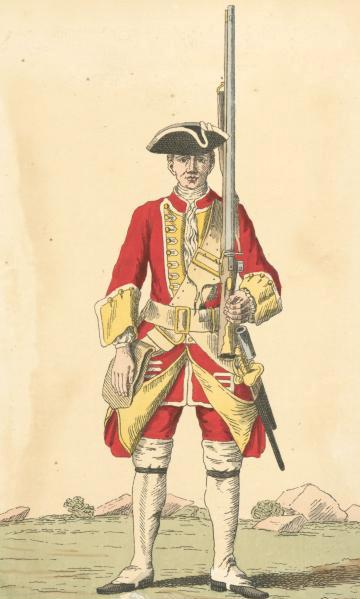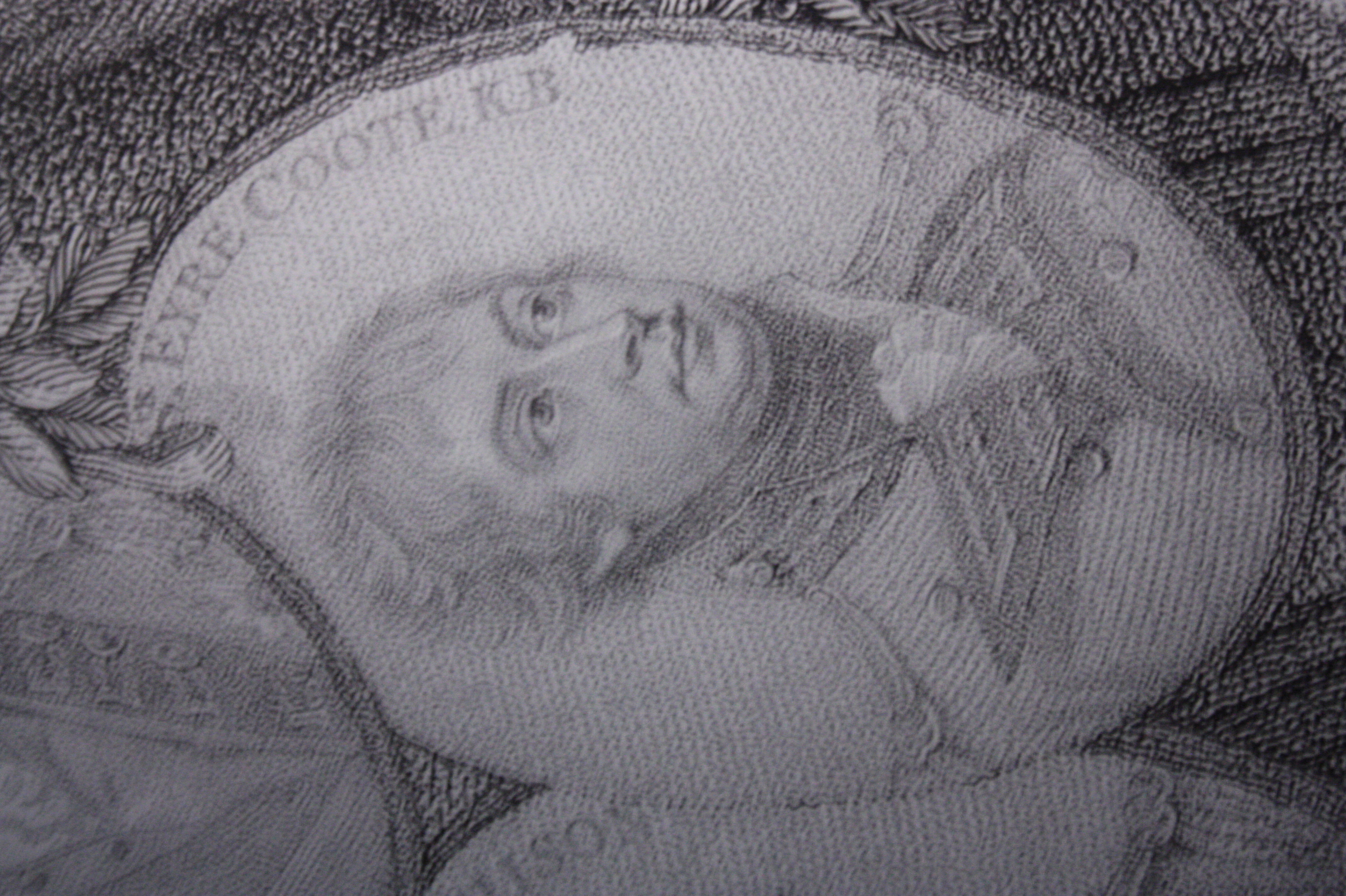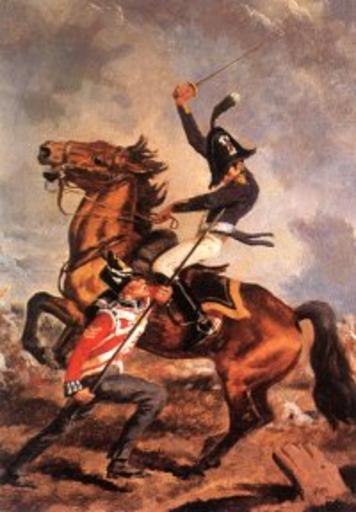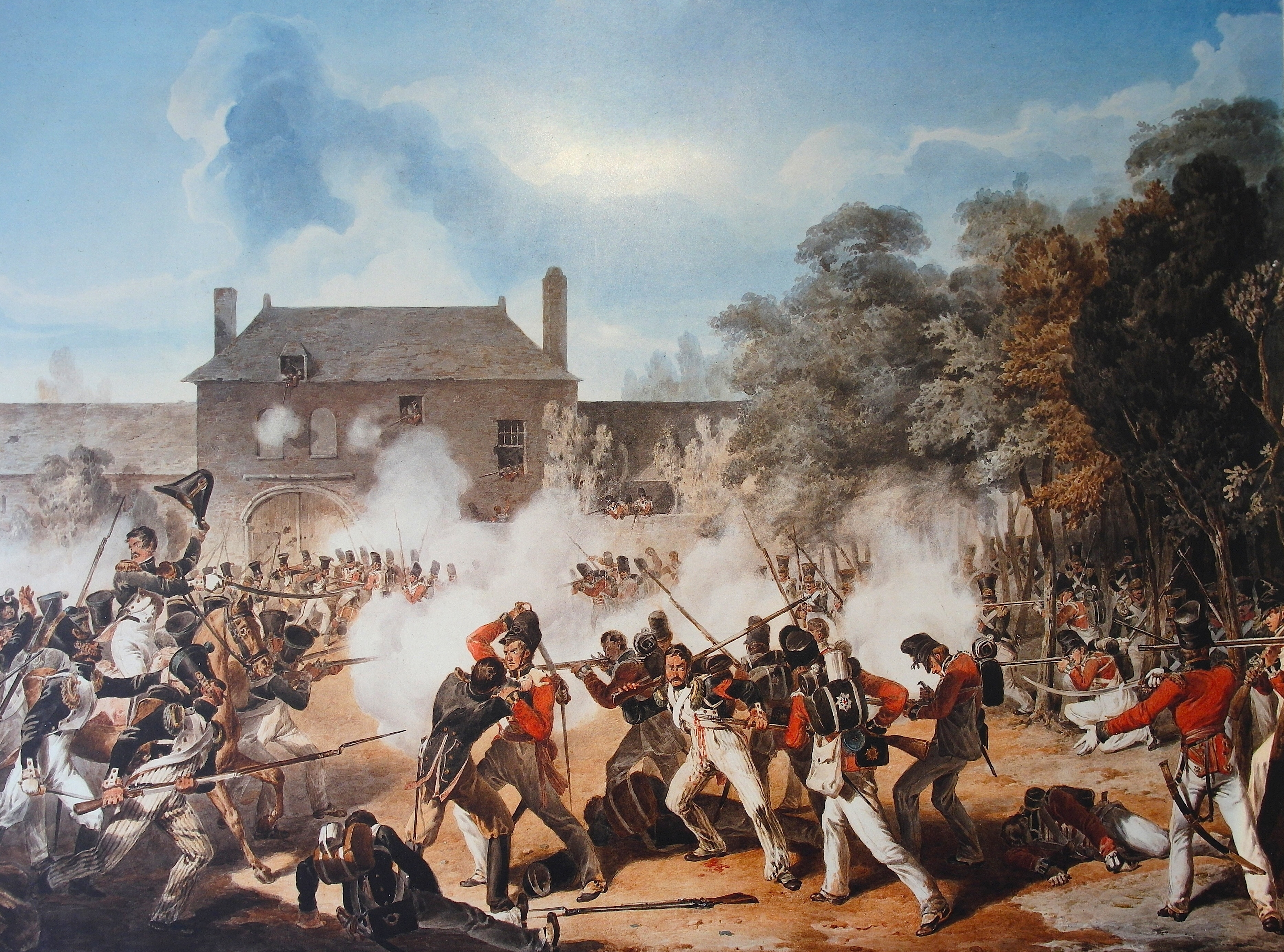|
Battle Of Abukir (1801)
The Battle of Abukir of 8 March 1801 was the second pitched battle of the French invasion of Egypt and Syria to be fought at Abu Qir on the Mediterranean coast, near the Nile Delta. The landing of the British expeditionary force under Lieutenant-General Sir Ralph Abercromby was intended to defeat or drive out an estimated 21,000 remaining French troops in Egypt. The fleet commanded by Baron Keith included seven ships of the line, five frigate A frigate () is a type of warship. In different eras, the roles and capabilities of ships classified as frigates have varied. The name frigate in the 17th to early 18th centuries was given to any full-rigged ship built for speed and maneuvera ...s and a dozen smaller warships. With the troop transports, it was delayed in the bay for several days by strong gales and heavy seas before disembarkation could proceed. Background In the early morning of the 8th March 1801, the landing force consisting of Flank companies of the 40th an ... [...More Info...] [...Related Items...] OR: [Wikipedia] [Google] [Baidu] |
French Invasion Of Egypt And Syria
The French invasion of Egypt and Syria (1798–1801) was a military expedition led by Napoleon Bonaparte during the French Revolutionary Wars. The campaign aimed to undermine East India Company, British trade routes, expand French colonial empire, French influence, and establish a Commission des Sciences et des Arts, scientific and administrative presence in Egypt. Napoleon also sought to sever Britain's connection to its colonial holdings in India, with the long-term ambition of challenging British dominance in the region. Departing from Toulon in May 1798, Napoleon’s fleet, comprising around Armée d'Orient (1798), 36,000 troops, landed in Alexandria on 28 June. Advancing rapidly, he defeated the ruling Mamluks at the Battle of the Pyramids, securing control of Cairo and establishing a French administration. The campaign, however, was soon compromised by the Battle of the Nile, destruction of the French fleet at Aboukir Bay by Horatio Nelson, which cut off French reinfor ... [...More Info...] [...Related Items...] OR: [Wikipedia] [Google] [Baidu] |
28th (North Gloucestershire) Regiment Of Foot
The 28th (North Gloucestershire) Regiment of Foot was a line infantry regiment of the British Army, raised in 1694. Under the Childers Reforms it amalgamated with the 61st (South Gloucestershire) Regiment of Foot to form the Gloucestershire Regiment in 1881. History Early years The regiment was first raised by Colonel Sir John Gibson, who had served as the Lieutenant-Governor of Portsmouth, as Sir John Gibson's Regiment of Foot on 16 February 1694. It was posted to Newfoundland to protect the colony there, losing many of its men to the extreme cold. The regiment was disbanded in 1697, but reformed under the same colonel in 1702. Posted to the continent during the War of the Spanish Succession the regiment fought at the Battle of Elixheim in July 1705 and at Battle of Ramillies in May 1706. It was then sent to the Spain, losing over half its men at the Battle of Almansa in April 1707, and then took part in the capture of Vigo in October 1719 during the War of the Quadr ... [...More Info...] [...Related Items...] OR: [Wikipedia] [Google] [Baidu] |
John Cradock, 1st Baron Howden
General John Francis Cradock, 1st Baron Howden (11 August 1759 – 26 July 1839), was a British Army officer, politician and colonial administrator. Life He was son of John Cradock, Church of Ireland Archbishop of Dublin. In 1775 he was admitted to St John's College, Cambridge. In 1777, he was appointed a cornet in the 4th Regiment of Horse, which in 1779 he exchanged to become an ensign in the Coldstream Guards, and in 1781 he was promoted a lieutenant with the rank of captain. In 1785 he purchased a commission as a major in the 12th Dragoons, exchanging this in 1786 for a post in the 13th Foot, where he was appointed lieutenant-colonel in 1789. He commanded the 13th in the West Indies in 1790, and served a second time in the West Indies commanding a battalion of grenadiers in 1793, where he was wounded at the reduction of Martinique and appointed the aide-de-camp of Sir Charles Grey, receiving the thanks of Parliament for his services. In 1795 he was appointed colonel ... [...More Info...] [...Related Items...] OR: [Wikipedia] [Google] [Baidu] |
92nd Regiment Of Foot
9 (nine) is the natural number following and preceding . Evolution of the Hindu–Arabic digit Circa 300 BC, as part of the Brahmi numerals, various Indians wrote a digit 9 similar in shape to the modern closing question mark without the bottom dot. The Kshatrapa, Andhra and Gupta started curving the bottom vertical line coming up with a -look-alike. How the numbers got to their Gupta form is open to considerable debate. The Nagari continued the bottom stroke to make a circle and enclose the 3-look-alike, in much the same way that the sign @ encircles a lowercase ''a''. As time went on, the enclosing circle became bigger and its line continued beyond the circle downwards, as the 3-look-alike became smaller. Soon, all that was left of the 3-look-alike was a squiggle. The Arabs simply connected that squiggle to the downward stroke at the middle and subsequent European change was purely cosmetic. While the shape of the glyph for the digit 9 has an ascender in most modern typef ... [...More Info...] [...Related Items...] OR: [Wikipedia] [Google] [Baidu] |
54th Regiment Of Foot
The 54th Regiment of Foot was an infantry regiment of the British Army, raised in 1755. Under the Childers Reforms it amalgamated with the 39th (Dorsetshire) Regiment of Foot to form the Dorsetshire Regiment in 1881. History Early history The regiment was raised in Salisbury by John Campbell, 5th Duke of Argyll in 1755 as the 56th Regiment of Foot for service in the Seven Years' War. It was re-ranked as the 54th Regiment of Foot, following the disbandment of the existing 50th and 51st regiments, in 1756. The regiment was deployed to Gibraltar in 1756 and remained there until it moved to Ireland in 1765.Records, p. 4 American Revolution The regiment was deployed to North America for service in the American Revolutionary War in 1776 and first saw action at the Battle of Sullivan's Island in June 1776.Records, p. 5 It went on to fight at the Battle of Long Island in August 1776, and the Battle of Rhode Island in August 1778. In May 1778 100 men of the 54th Regiment of Foot e ... [...More Info...] [...Related Items...] OR: [Wikipedia] [Google] [Baidu] |
Eyre Coote (British Army Officer)
General Eyre Coote (20 May 1762 – 10 December 1823) was a British Army officer, politician and colonial administrator who served as the governor of Jamaica from 1806 to 1808. He attained the rank of general in the British army and was created a Knight Grand Cross of the Order of the Bath before being stripped of his rank and honours in 1816 after conduct unbecoming an officer and a gentleman. Background He was the second son of the Very Rev. Charles Coote (1713 – 12 February 1776), DD, Dean of Kilfenora and wife (m. 31 July 1753) Grace Tilson (- 1 January 1767), brother of Charles Henry Coote (1754–1823), who succeeded the last Earl of Mountrath as 2nd Baron Castle Coote in 1802, and nephew of Sir Eyre Coote, KB, the celebrated Indian General, to whose vast estates in England and Ireland he eventually succeeded. Career Following studies at Eton and Trinity College Dublin, Coote purchased a commission in 1774 as an ensign in the 37th Regiment of Foot, of which h ... [...More Info...] [...Related Items...] OR: [Wikipedia] [Google] [Baidu] |
Scots Guards
The Scots Guards (SG) is one of the five Foot guards#United Kingdom, Foot Guards regiments of the British Army. Its origins are as the personal bodyguard of King Charles I of England and Scotland. Its lineage can be traced back to 1642 in the Kingdom of Scotland, although it was only placed on the English Establishment in 1686. History Formation; 17th century The regiment now known as the Scots Guards traces its origins to the Marquis of Argyll's Royal Regiment, a unit raised in 1642 by Archibald Campbell, 1st Marquess of Argyll in response to the Irish Rebellion of 1641, 1641 Irish Rebellion. After the Restoration (England), Restoration of Charles II, the George Livingston, 3rd Earl of Linlithgow, Earl of Linlithgow received a commission dated 23 November 1660 to raise a regiment which was called The Scottish Regiment of Footguards. It served in the Battle of Bothwell Bridge, 1679 Covenanter rising of 1679, as well as Argyll's Rising in June 1685, after which it was expanded ... [...More Info...] [...Related Items...] OR: [Wikipedia] [Google] [Baidu] |
Coldstream Guards
The Coldstream Guards is the oldest continuously serving regular regiment in the British Army. As part of the Household Division, one of its principal roles is the protection of the Monarchy of the United Kingdom, monarchy; due to this, it often participates in state ceremonial occasions. The Regiment has consistently provided formations on deployments around the world and has fought in the majority of the major conflicts in which the British Army has been engaged. The Regiment has been in continuous service and has never been amalgamated. It was formed in 1650 as 'Monck's Regiment of Foot' and was then renamed the 'Lord General's Regiment of Foot Guards' after the Stuart Restoration, Restoration in 1660. With George Monck, 1st Duke of Albemarle, George Monck's death in 1670 it was again renamed the 'Coldstream Regiment of Foot Guards' after Coldstream, the location in Scotland from which it marched to help restore the monarchy in 1660. Its name was again changed to the 'Coldstre ... [...More Info...] [...Related Items...] OR: [Wikipedia] [Google] [Baidu] |
George Ludlow, 3rd Earl Ludlow
General George James Ludlow, 3rd Earl Ludlow, GCB (12 December 1758 – 16 April 1842) was a British Army officer. Military service Ludlow served in the British Army as a captain during the American Revolutionary War. Following the British surrender at Yorktown, he was held as a prisoner of war (POW) in Lancaster, Pennsylvania. In May 1782, he was one of 13 POWs forced to draw lots to determine which one should be executed in retaliation for the execution of a patriot captain by loyalists, in what became known as the Asgill Affair. He rose to Colonel of the 1st Foot Guards 21 August 1795, and Major General 18 June 1798. In 1801 he served under Abercromby and Hely-Hutchinson in the Egyptian Campaign commanding the Guards Brigade, seeing action at Aboukir, and Alexandria (Canope). He was made Lieutenant General on 30 October 1805. In August 1807 he commanded the 3rd Division in the Copenhagen Campaign under Lord Cathcart. Ludlow was promoted General in June 1814. He was ... [...More Info...] [...Related Items...] OR: [Wikipedia] [Google] [Baidu] |
Battle Of Alexandria (1801)
The Battle of Alexandria (also known as the Battle of Canope) fought on 21 March 1801 between the British and French armies as part of the French invasion of Egypt and Syria. Led by General Sir Ralph Abercromby, the British engaged a French force under Divisional-general Jacques-François Menou near the ruins of Nicopolis, on the narrow spit of land between the Mediterranean Sea and Abukir. The British routed Menou's army after several hours of fierce fighting, though Abercromby was mortally wounded. John Hely-Hutchinson, who replaced Abercromby, led the British army to Alexandria and laid siege to the city, which surrendered in September. Background Following Lanusse's reverse at Mandora, Menou finally arrived from Cairo to take direct command of French forces, and determined to attack on 21 March. François Lanusse would lead on the left with the brigades of Valentin and Silly, supported by the infantry Divisions of Antoine-Guillaume Rampon in the centre and Jean Reynier ... [...More Info...] [...Related Items...] OR: [Wikipedia] [Google] [Baidu] |
54th (West Norfolk) Regiment Of Foot
The 54th Regiment of Foot was an infantry regiment of the British Army, raised in 1755. Under the Childers Reforms it amalgamated with the 39th (Dorsetshire) Regiment of Foot to form the Dorsetshire Regiment in 1881. History Early history The regiment was raised in Salisbury by John Campbell, 5th Duke of Argyll in 1755 as the 56th Regiment of Foot for service in the Seven Years' War. It was re-ranked as the 54th Regiment of Foot, following the disbandment of the existing 50th and 51st regiments, in 1756. The regiment was deployed to Gibraltar in 1756 and remained there until it moved to Ireland in 1765.Records, p. 4 American Revolution The regiment was deployed to North America for service in the American Revolutionary War in 1776 and first saw action at the Battle of Sullivan's Island in June 1776.Records, p. 5 It went on to fight at the Battle of Long Island in August 1776, and the Battle of Rhode Island in August 1778. In May 1778 100 men of the 54th Regiment of Fo ... [...More Info...] [...Related Items...] OR: [Wikipedia] [Google] [Baidu] |
Royal Scots
The Royal Scots (The Royal Regiment), once known as the Royal Regiment of Foot, was the oldest and most senior infantry regiment line infantry, of the line of the British Army, having been raised in 1633 during the reign of Charles I of England, Charles I. The regiment existed continuously until 2006, when it amalgamated with the King's Own Scottish Borderers to become the Royal Scots Borderers, which merged with the Royal Highland Fusiliers, Royal Highland Fusiliers (Princess Margaret's Own Glasgow and Ayrshire Regiment), the Black Watch, the Highlanders (Seaforth, Gordons and Camerons) and the Argyll and Sutherland Highlanders to form the Royal Regiment of Scotland. History 17th century In April 1633, John Hepburn (soldier), Sir John Hepburn was granted a Warrant (law), warrant by Charles I of England, Charles I to recruit 1200 Scots for service with the French army in the 1618–1648 Thirty Years War. The nucleus came from Hepburn's previous regiment, which fought with the ... [...More Info...] [...Related Items...] OR: [Wikipedia] [Google] [Baidu] |






